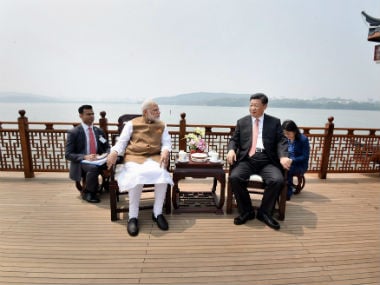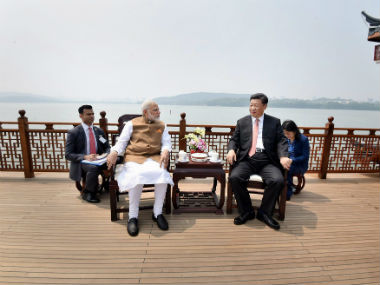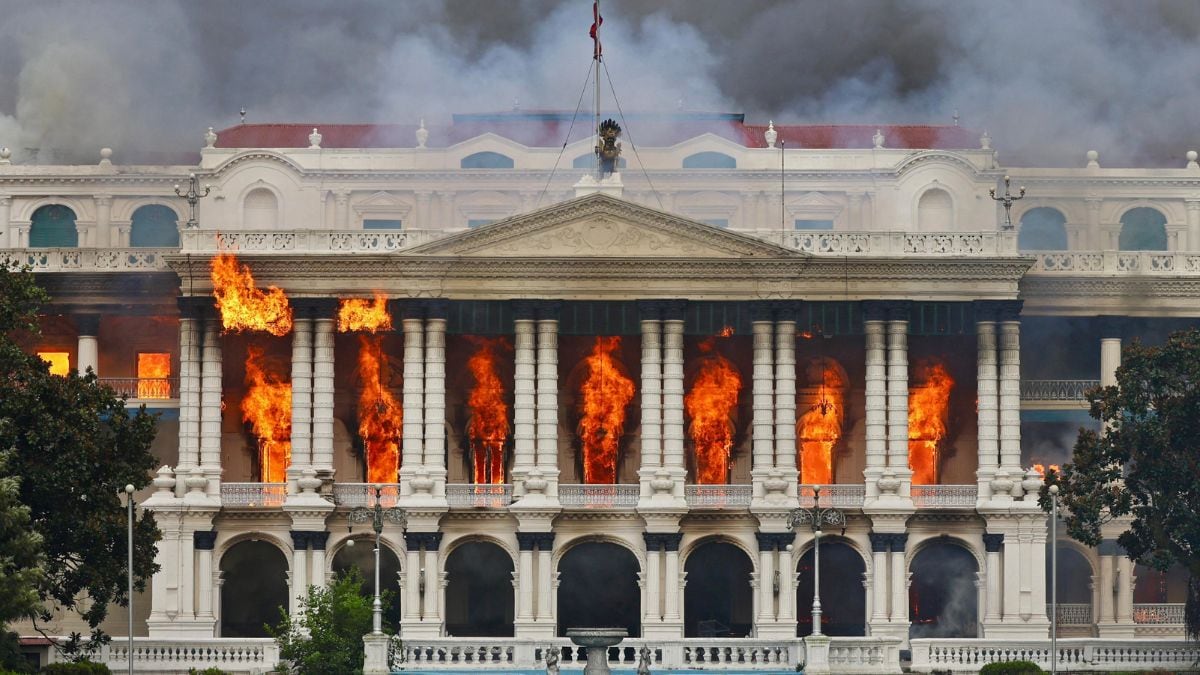Narendra Modi and Xi Jinping’s informal summit at Wuhan has triggered varying sets of reactions in the Chinese and Indian media. While the former has interpreted the “reset” as an overwhelmingly positive development in the context of regional stability and bilateral ties, the latter has remained exceedingly cautious, bordering on being cynical and even negative. A bit of cynicism is warranted, considering the recent trajectory of bilateral ties. But how justified is it to call the summit an exercise arising out of the prime minister’s domestic, electoral compulsions? Did India really go into the process from a “position of weakness” arising out of an “immature” China policy? Will Wuhan go down in history as an inflection point that highlighted Modi’s infirmity and marked India’s “kowtowing” before China from a post-Doka La high? If so, that would be exceedingly curious. Not the least because such a reading is incompatible with recent developments on the geopolitical and geo-economic fronts. An unpredictable Donald Trump and a recalcitrant Kim Jong-un have injected doses of instability into a fluid global order, leaving all ’large’, ‘rising’ and ‘middle’ powers scurrying for pivots. Instability brings with it a sort of (if temporal) equality. Now that China is trying to cope with winds of change in its neighbourhood and struggling to maintain its influence over Pyongyang, it would be a strange time for Modi to go belly up and prostrate before the ‘son of heaven’ after showing resolve earlier. The fact that an attempted reconciliation may — according to strategic affairs expert Brahma Chellaney — “potentially dent his self-cultivated image as a strongman boasting a 56-inch chest measurement” adds to the intrigue if we choose to interpret Wuhan Summit as Modi’s ‘capitulation’. To quote Indrani Bagchi in Economic Times, “Wuhan is not likely to get Modi any extra votes. But if things go south, it could impose political costs.” If the informal meeting was unlikely to result in any short-term political leverage, and may even impose long-term political costs on Modi, the question is why would the prime minister attempt the reconciliation at all just one year before he seeks a return mandate? Modi has never been found short on pragmatism. Bagchi explains: “in those six closed-door conversations, there emerged a better understanding among the two leaders about the paths their two nations would take in their growth trajectories.” [caption id=“attachment_4457491” align=“alignleft” width=“380”]  Narendra Modi and Xi Jinping in Wuhan. PTI[/caption] That is certainly a core reason for the re-engagement. To suggest that Modi sought a unilateral audience with Xi to keep things quiet at the border is a political interpretation unsupported by facts. What we must consider instead is that the level of tension in bilateral ties leading up to Doka La (and even post the 72-day standoff, despite BRICS) had become unmanageable for both sides and a common desire to regulate the strain in relations and search for a new modus vivendi in ties played no small a part in driving Modi and Xi to the discussion table. This isn’t to suggest that there weren’t other (even competing) motivations at work, but it had become clear to both leaders that the need for at least a short-term stability in ties has become inevitable. India and China have structural problems that are likely to worsen over time, but why should that prevent Modi and Xi from arriving at a set of co-operative measures that may balance the competitive steps both nations will inevitably take in their quest for exerting economic and geopolitical influence in a crowded neighborhood. In the words of former NSA and foreign secretary Shiv Shankar Menon, “Our basic problem is that we rub up against each other in the periphery, which we both share. That is something which has to be talked through,” he told Devirupa Mitra of The Wire, adding: “because none of us have an interest in instability in our periphery. Neither of us want to see the rise of extremism or terrorism in our region. Both of us need a stable periphery, if we need to concentrate on our domestic economic development. It makes sense to have a proper conversation on these issues.” Former foreign secretary S Jaishankar, who had played a key role in resolving the Doka La crisis, contends that talks aren’t a sign of weakness, but a mark of boldness. “It is certainly a very bold step. The fact that they have agreed on an informal summit shows that the two leaders realise the importance of this relationship. They have taken on the responsibility themselves on putting it on a better course,” he told ANI in an interview conducted just before the summit. What we see here is a commonality of interests between Beijing and New Delhi to seek a re-engagement that led to Wuhan. It may have its seeds in the BRICS Summit at Xiamen, following which both sides employed their special representatives (Ajit Doval and Yang Jiechi) to find “a platform for strategic communication”. Yet, is it likely that the manouvre may result in a squeezing of India’s strategic space? JNU professor Rajesh Rajagopalan contends, “Considering the wide gap in the strategic balance between the two countries — and considering that it is still widening — it makes sense for India to find ways to avoid any confrontation with China until this balance shifts sufficiently such that it is less onerous than at present.” He, however, cautions against India squeezing its strategic space by “kowtowing” to China and writes that “if this is the price of the reset, it is just too high.” In a related vein, Manoj Joshi detects a “realisation in New Delhi that the sum total of these positions (NSG, Masood Azhar, Forum for India-Pacific Islands Cooperation) which emphasise confrontation, are unsustainable. What worries Modi now is that Beijing could lower the boom in an election year, with all its unpredictable consequences,” he writes in in his piece for Scroll. Assuming that India made the first move in mending fences, to read submission or an electoral motive in it speaks of a defeatism that mirrors inversely the triumphalism that marks eulogies of Xi in Chinese media. Just as the “chairman of everything” cannot do anything wrong, it would seem Modi is incapable of doing anything right. This position heightens the threat perception that India faces from China and lowers (and even ignores) the motivations that led Xi to the discussion table. Underplaying the impulses that forced Xi’s hands into seeking a reengagement (covered in some detail in my earlier piece here ) may make for a skewered assessment. The portends out of Washington, for instance, are quite belligerent and Donald Trump seems determined to take a quarter from China instead of giving any.
Our high level delegation is on the way back from China where they had long meetings with Chinese leaders and business representatives. We will be meeting tomorrow to determine the results, but it is hard for China in that they have become very spoiled with U.S. trade wins!
— Donald J. Trump (@realDonaldTrump) May 5, 2018
The US president, according to a report in Financial Times, wants China to slash “its $337bn-a-year trade surplus in goods and services with the US by almost two-thirds over the next two years and refrain from retaliation against any US trade actions. However, it also wants to end elements of Mr Xi’s ‘Made in China 2025’ strategy, which aims to establish a world-leading role for Chinese companies in some sectors.” Former foreign secretary Shyam Saran feels that the altered circumstances arising out of US protectionism has shaken Chinese belief in the indomitable trajectory of their rise. As a result, he writes in The Indian Express, “there is now a recognition by China that it may have been too hasty in assuming the inevitability of a G-2 world dominated by China and the US and that perhaps there is still some value in maintaining a strategic relationship with other major emerging economies like India.” Interestingly, soon after the Wuhan Summit, China removed import duties on 28 medicines from India that is expected to alleviate a certain portion of the $51 billion trade deficit that India suffers from in bilateral trade.
China has exempted import tariffs for 28 drugs, including all cancer drugs, from May 1st. Good news for India’s pharmaceutical industry and medicine export to China. I believe this will help reduce trade imbalance between #China and #india in the future.
— Xu Feihong (@China_Amb_India) May 3, 2018
Luo Zhaohui, China’s ambassador, in an interaction with the media claimed that “Wuhan was not just a “talk shop”, but both leaders took real decisions and there was a consensus which will be implemented”. Chinese vice foreign minister Kong Xuanyou has said that Beijing won’t push New Delhi on BRI. These are meant as signals. Erring on the side of caution is advisable but an assessment of India-China ties should be done through the lens of realism, not alarmism. The power differential may make for a lopsided relationship right now but this anomaly is temporal. In the long run, India is likely to emerge as China’s biggest challenger. Managing the rivalry in the short-term is crucial, and Wuhan is a step in the right direction.


)

)
)
)
)
)
)
)
)



